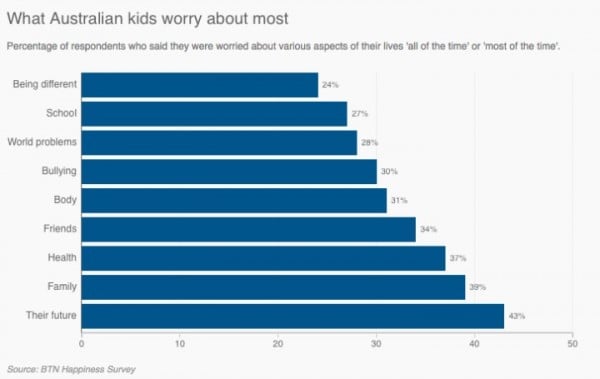
By Clare Blumer
It is well known that parents spend a lot of time worrying about their children’s future, but do they know their children are worrying too?
ABC’s current affairs program for kids Behind the News has surveyed 20,000 Australian children to find out what makes them happy and sad.
What they’re worried about is surprisingly similar to what adults worry about.


